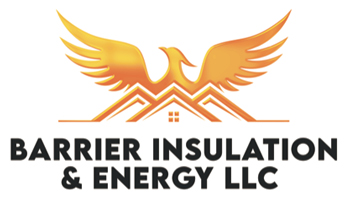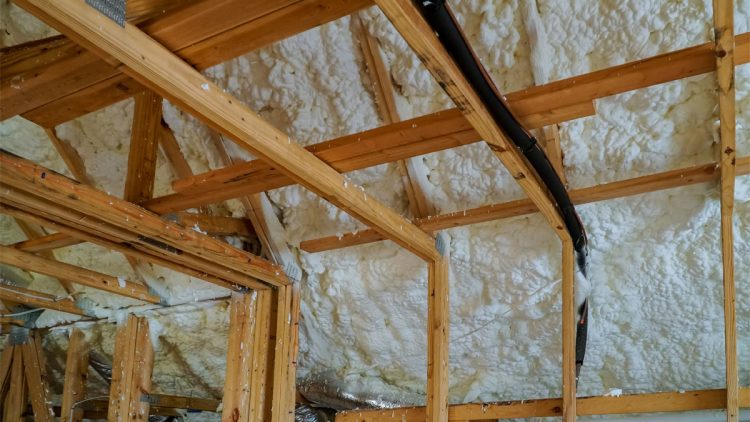Spray Foam Vs Batt Insulation
Which type of insulation is best for your home: spray foam or batt? Let’s take a look at the similarities and differences of these two insulation types.
Spray Foam Insulation
Spray foam insulation is sprayed on wet and it expands rapidly into gaps, cracks, and solidifies as a hard, thick foam. This insulation type can be used to insulate the walls of new build and existing homes. One of the best features of spray foam insulation is how well it conforms automatically to all of the odd shaped cavities and air leaks.
The R-value of spray foam depends on the chemical makeup as there are two variants, closed and open cell spray foam insulation. Spray foam insulation does require a slightly greater investment, but it does offer superior performance.
Pros & Cons Of Spray Foam Insulation
Spray foam insulation is unique in that not only does it act as an insulation barrier, but expands into tiny gaps and cracks. This seals off many of your home’s air leaks, to keep you cooler in summer and warmer in winter. Open cell spray foam expands to an incredible 100 times its original volume in just seconds.
The primary components of spray foam are an organic chemical compound made from petroleum extracts and water. It is mixed and blown onto the inner wall and attic surfaces to seal the home and insulate it.
Pros Of Spray Foam:
These are just a few of the pros for spray foam insulation.
- Rated for fire safety for walls and attics
- It’s an environmentally safe insulation
- Spray foam doesn’t attract insects or pests
- Will not retain water from roof leaks
- Helps create a semi conditioned space in attic
- Seals off air leaks to help reduce energy bills
Cons Of Spray Foam:
Spray foam insulation does cost more than traditional insulation up front, yet it is a more effective insulation option. Over time the difference will get paid back with superior performance.
- Spray foam costs more up front
- Spray foam must be installed by a pro
- Some brands might have an odor for a short time
Batt Insulation
Batt insulation is commonly referred to as “batts” or “rolls”. This type utilizes a flexible blanket-like insulation that is best suited for easily accessible areas. Batts and rolls can be used in non-standard areas, so the material will have to be cut to size.
The blankets come in high, medium and standard-density constructions, made from fiberglass, rock wool and other similar materials. Batt insulation can be fitted quite easily to the specific areas, but it may be hard to fit in unusual or hard-to-access areas.
Pros & Cons Of Batt Insulation
Batt or blanket insulation is typically made of mineral wool or fiberglass. Most often, you will find batt insulation sold in rolls, with pre-cut sizes offered in some cases. Batt insulation is usually used in exposed walls, ceilings, attics or floors. Here is a look at some pros and cons associated with batt insulation.
Pros Of Batt Insulation:
- This material is fire-resistant.
- Can hold up against water damage.
- This is the easiest material for any DIY projects.
Cons Of Batt Insulation:
- Hard to fit in oddly-shaped areas.
- Material will compress over time.
- Requires the use of personal protective equipment.
How Much Does Spray Foam Insulation Cost?
The cost of spray foam insulation installation will also vary depending on if you’re planning to do your whole home, or just certain areas like the attic, exterior walls, or crawl space. According to improvenet.com the average installation cost for spray foam insulation in the United States is $2,000. *These are not our actual costs. Contact Barrier Insulation to get an actual quote today.
This cost includes many new build homes that don’t require insulation removal or any demolition to install new insulation. For older homes that want to remove old insulation and install new spray foam insulation in the whole home, attic, walls, or crawl space the costs are higher.
How Much Does Batt Insulation Cost?
On average, batt and roll installation costs between $0.80-$2.60 per square foot. This equates to an average of $1,100-$3,900 for installation, according to HomeGuide. A roll of insulation typically costs $20-$90, which will cover anywhere between 40-75 square feet.
Spray Foam Vs Batt Insulation Comparisons
Now let’s compare the two types of insulation head-to-head.
How It Works
Batt insulation will trap air inside tiny glass fibers, which slows the overall transfer of heat. Spray foam insulation comes in two forms; open and closed cell. Open cell is used specifically as an air barrier.
Energy Efficiency
Batt insulation is less energy efficient than spray foam insulation.
R-Value
The R-value of batt is 2.2 per inch non aged R-value. This insulation type will lose its R-value over time, though. Spray foam, meanwhile, will not lose R-value over its lifespan.
Flammability
Batt is potentially flammable due to the presence of kraft paper. Spray foam is flammable, with a barrier featuring a fire rating a necessity.
Lifetime
If the batt insulation stays dry, it can thrive anywhere from 10-25 years. Spray foam insulation has been known to last 80+ years.
Barrier Insulation Offer Batt And Roll Insulation in Phoenix
If you live in the Phoenix Valley and are considering bat and roll insulation, Barrier Insulation can help! Barrier Insulation offers spray foam insulation installation in Phoenix, Mesa, Chandler, Scottsdale, Glendale, Gilbert, Tempe and more.
As the leading bat and roll insulation installer, our team is dedicated to providing the best insulation installation, complete customer satisfaction, and meticulous application of your insulation. To get your cost to install spray foam insulation at your home or business please visit our contact page, or give us a call at 602-499-2922.


